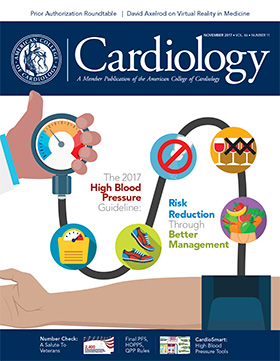Physical activity, including exercise training and habitual activity, was shown to reduce all-cause, cardiovascular and non-cardiovascular mortality in patients with stable coronary heart disease (CHD) in the STABILITY trial. The results were published in the Journal of the American College of Cardiology.
The present study included 15,486 patients from 39 countries within the STABILITY trial of darapladib. Their mean age was 65 years, 18 percent were women, mean BMI was 28, and 35 percent participated in cardiac rehab. Based on the self-reported International Physical Activity Questionnaire, the patients were allocated to tertiles of activity: mild (<3 metabolic equivalents [METS]), moderate (3-6 METS) and vigorous (>6 METS). Patients were also queried about their level of activity at work and during leisure time.
Over the 3.7 years of follow-up, the unadjusted and adjusted analyses showed a greater reduction in the primary outcome of all-cause mortality with moderate and vigorous levels of physical activity vs. mild (adjusted hazard ratio [HR], 0.75 and 0.70, respectively). Likewise, the reductions were greater with moderate and vigorous activity vs. mild activity for cardiovascular death (adjusted HR, 0.89 and 0.71, respectively) and non-cardiovascular death (adjusted HR, 0.54 and 0.73, respectively).
Major adverse coronary events were lower with vigorous activity vs. mild activity (adjusted HR, 0.81), but similar with moderate activity (adjusted HR, 0.96).
No difference was seen for myocardial infarction and stroke between the groups.
The investigators found that a doubling of the exercise volume and of the exercise duration also produced reductions in all-cause and cardiovascular mortality. And a one-level increase in average exercise intensity was associated with a reduction in total mortality (adjusted HR, 0.84) and cardiovascular mortality (adjusted HR, 0.81).
“At a population level, the greatest benefits to health are likely to be achieved by modest increases in exercise in sedentary persons, especially in persons who have a higher risk of adverse events, and those with exertional angina and dyspnea,” the authors write.
In an accompanying editorial comment, Thijs M.H. Eijsvogels, PhD, and Martijn F.H. Maessen, PhD, note the data from this study suggest that a 33 percent reduction in all-cause mortality can be achieved with as little as 10 minutes of walking a day at a brisk pace (3.5 mph) or with 15-20 minutes of walking at a slower pace of 2-2.5 mph. “The low volume of this minimal effective dose may stimulate patients to incorporate feasible physical activity goals in their daily lives and may also eliminate barriers, such as insufficient time or self-confidence, to become physically active,” they write. They also state, as do the study authors, that the findings in this study require confirmation in randomized, clinical trials.
Eijsvogels and Maessen conclude that in the meantime, for secondary prevention, patients and clinicians should remember that when it comes to exercise, “a little is good, more is better, and vigorous is best.”
Stewart RAH, Held C, Hadziosmanovic N, et al. J Am Coll Cardiol 2017;70:1689-1700.
<<< Return to top




